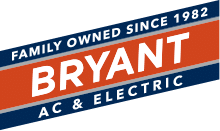For a long time, large-gauge aluminum wire has been used very successfully for power transmission lines. Because it is much lighter than copper, it is also used for wiring in many types of aircraft. Since aluminum already had been used successfully in aviation and by power companies, it became a popular alternative to copper when copper prices began soaring in the mid-sixties. At that time, aluminum was thought to be a perfect solution, and aluminum producers began manufacturing large amounts of small-gauge aluminum wire, as they saw huge potential for profits in this market.
In time however, problems with aluminum wiring began to surface. Although many new homes in the sixties and seventies were wired with aluminum, they still contained copper, brass, and steel parts in lamps, switches, outlets, breaker boxes and other components. At the points where these metals were connected with aluminum, symptoms related to a condition known as “dissimilar metals” began to appear. Scientists had long known that when you place two different metals in contact with each other, small electrical currents are produced. Over time, these currents can cause something known as “galvanic corrosion” which eats away the metal at these connections. Galvanic corrosion became particularly evident when aluminum wire was present. Corrosion led to arcing, and this arcing was sometimes known to produce fires. As more and more people became aware of these hazards, aluminum wiring fell out of favor.
In response, government agencies changed their electrical codes, preventing the installation of aluminum wiring in homes and commercial buildings. Around the same time, insurance companies began raising their rates for buildings with aluminum wiring, and some insurance providers stopped insuring these homes and buildings altogether. Aluminum safety and insurance issues became a great concern for many homeowners who couldn’t afford the expense of completely rewiring their homes. The scope of these problems influenced new research, and fortunately, some viable solutions were produced. Of greatest importance is the identification of aluminum wiring. If you think this may be a problem in your home or building, we’ll be happy to provide a professional inspection. If aluminum wiring is present, we will explain all the options available, and provide a bid.
